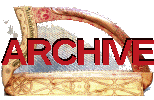
|
The revival of historical Gaelic harp music really started only in the 1970s, when Ann Heymann got hold of a copy of the historical Castle Otway harp made by Jay Witcher, and started applying the historical left orientation and fingernail playing techniques detailed in Bunting’s books. That revival continues to the present day with many players having studied with Ann, and many instrument makers following Jay’s lead and producing good copies of the historical instruments, set up according to historical practice with metal wire strings.
Before this, though, there were people who realised that the usual modern gut-strung “Celtic” harp and its Romantic music was a 19th century invention, and that the older traditions used a very different harp and different traditional idioms. Earlier experiments do tend to concentrate on the physical instruments, perhaps because the old harps in museums were always visible as a reminder of the old style, whereas the sources for style and technique were hidden away in rare books and unpublished manuscripts.
Some people did experiment with the old repertory and styles, but using a modern harp. I have put together an appendix for other recordings connected with Gaelic harp music but not using an old-style Gaelic harp.
This list is not complete; it is a personal selection of the kind of music I am interested in, i.e. old Irish and Scottish music played in historical style on the ancient type of clarsach or Irish harp, with metal wire strings. If you think I have missed out anyone important please do let me know.
Mary Rowland
[Trinity College harp]
BBC, 1961
An unreleased recording; the late Grainne Yeats made a copy for me. I have never seen the original. In 1961, the 15th Century Trinity College harp was taken to the British Museum for restoration. While it was there, the musicologist Joan Rimmer fitted new brass wire strings to it, and brought some of them up to pitch, while the harpist Mary Rowland played 2 tunes and some experimental notes on it. Mary obviously struggled with the left orientation, unfamiliar string spacings and unstable tuning, and the harp itself seems too lightly strung to sound good. But this was an important recording in alerting some people to the distinctive sound of an early Irish harp. I don't have a photo of Mary - I wonder if there is a picture anywhere of her with the harp? More...

Mabel Dolmetsch
Translations from the Penllyn Manuscript of Ancient Welsh Harp Music
Ancient Welsh Music Society, 1937
These three 10-inch gramophone records were issued as a set along with a printed sheet music of Arnold Dolmetsch’s transcriptions of music from the Robert ap Huw manuscript. Arnold was a pioneer in the recreation of historical music, and towards the end of hils life he became fascinated by this old Welsh harp repertory. He built harps, styled after the extant medieval Irish and Scottish instruments, of which some were fitted with gut strings and some with metal wire. You might expect Mabel to have used a gut-string instrument for playing the Welsh music, but I think she just loved the sound of the harps with metal strings, and it is one of them that she plays on these three discs. I think she is using her fingernails.
The sound of the harp is very delicate and sweet, and her playing is very loose with much rubato and slow ornaments. You can see influence from their other work on historical music, e.g always playing the ornaments on the beat, not before. This is a delightful recording.
My illustration shows the harp drawn by Arnold which illustrates the front cover of the transcriptions booklet.

Mabel Dolmetsch
Irish Harp Music
Haslemere, 1937
I have acquired two test discs which include Irish harp music played by Mabel Dolmetsch. She has selected three tunes from Bunting’s 1809 book, and plays them with superb grace and style on one of Arnold Dolmetsch’s reconstructions of the medieval Scottish and Irish harps. more...
Other musicians working at this music before 1970 include Chris Warren - I have heard a 1974 lecture in which he plays fragmentary examples, but his harp was poorly set up and he was a scholar rather than a musician. Also Rev. Richard Henebry made himself a copy of the Trinity College harp c.1907 and I understand he did play it. He collected wax cylinders as well! And of course, from 1892 onwards there were the harps made in Edinburgh by Glen, some of which were played at the first Mod. Is it possible that there exists somewhere a phonograph recording of one of the old Irish harpers?
Ordering instructions: I carry a number of Gaelic harp books and CDs in stock at the Emporium. I am happy to try and source out-of-print or hard-to-find items not currently in stock. Go to the Emporium homepage for more details.
I also will buy secondhand copies of many of these items. Contact me with details of what you have and we can discuss terms.
Simon Chadwick